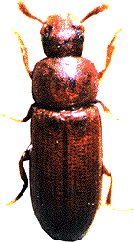Group selection

Group selection describes natural selection operating between groups of organisms, rather than between individuals. This would produce adaptations that benefit the group, rather than the individual. Darwin's theory of evolution was based upon individual selection, and he rejected the idea of group selection.
Animals sometimes restrain their reproduction:
The idea was brought to prominence in 1962 by the British biologist Wynne-Edwards, who argued that animals restrain their reproduction in order not to over-eat the local food supply. If all the individuals in a group reproduce at the maximum rate, their offspring might over-eat the food supply, and the group would then go extinct. This could be avoided by collectively restraining their reproduction.
Natural selection on individuals does not favor reproductive restraint:
An individual that increases its reproduction will be favored relative to individuals that produce fewer offspring. Within a group, if some individuals produce more offspring than others, the former will proliferate. For Wynne-Edward's theory to be correct, selection on groups must be weaker than selection on individuals.
Group selection has shown to be at least theoretically possible by experiments which selected for reproductive constraint in flour beetles (pictured opposite).
The idea has largely been replaced by kin selection, which also seeks to explain altruistic behavior.
Can individual selection within the group be overcome by selection between groups?
| Next |



